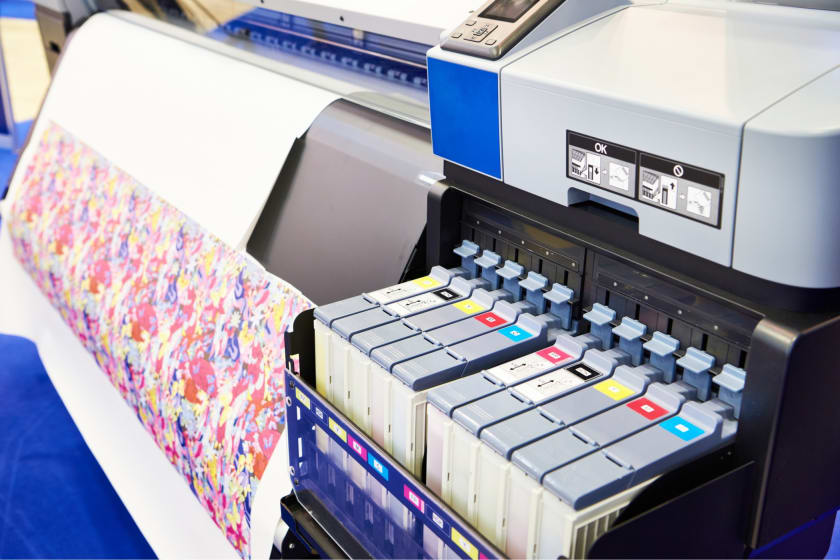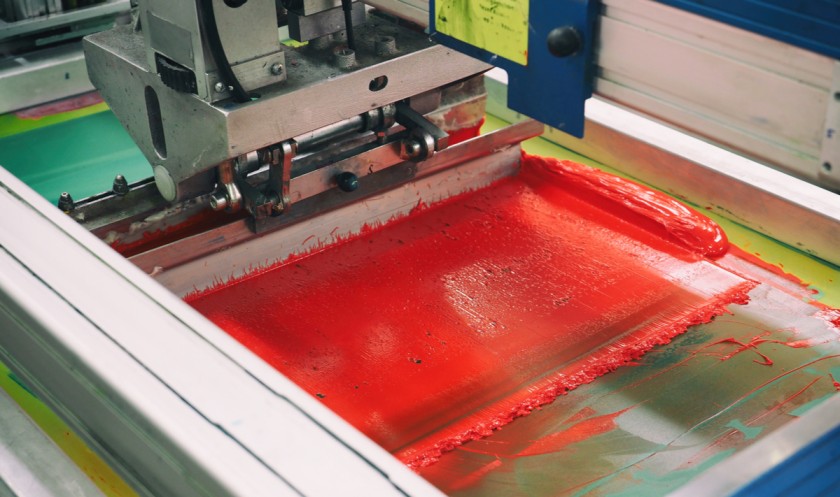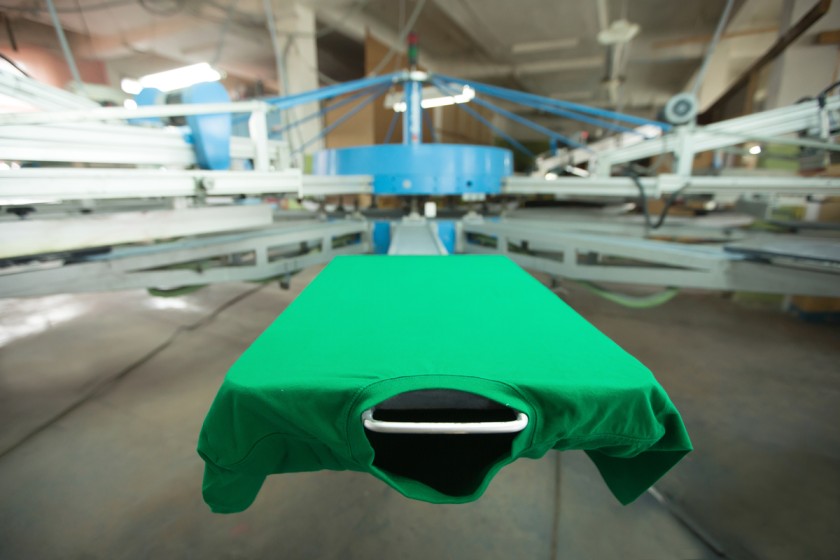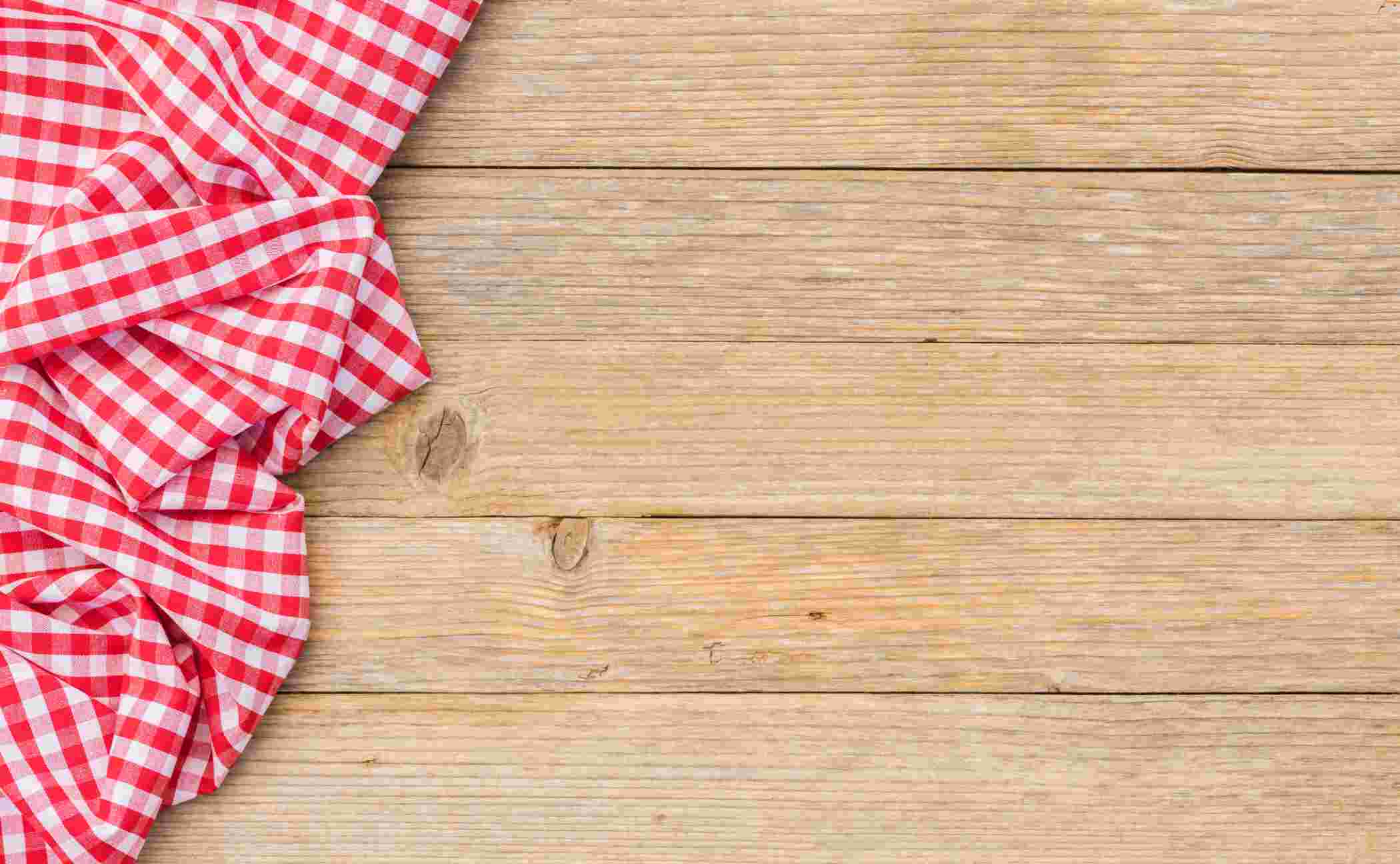10 Highest Rated Printing Machines for Fabric



There is a range of fabrics—cotton, rayon, silk, synthetic fibres, and nylon—all are treated differently because of their different compositions. One should select and install a printing machine depending on their printing application needs. Every printing machine has a different design pattern to print different fabrics.
There are many varieties of printers available in the market today, but we will focus mainly on three types of printing machines for fabric that are commonly used depending on the type of cloth that needs to be printed. So depending on your business requirements, you may choose from the following:
- Dye sublimation printers
- Direct-to-fabric thermal printers
- Hybrid design printers
Usually, for fabrics, such as cotton, nylon, and silk, a direct-to-fabric thermal printer works best. Whereas for materials such as polyester, a dye-sublimation machine is required.
Dye Sublimation Printers?
A dye-sublimation printer works by heating the dye first before applying it to the fabric. The dye-sublimation concept works on the principle that ink does not transition from solid to gas before first passing via a fluid phase or dissolution. Design and photo printing on the solid matter is done with dye-sublimation scanners.
The textile industry relies heavily on dye sublimation dyeing. The method produces the ideal print on polyester fabric, which is the most used textile for smooth branding at exhibitions, shopping malls, and airports. Dye-sublimation printing is also suitable for sports clothing and household decorations like wall hangings and bathroom curtains.
Now let’s review some of the top models in this category.
· VJ-1638WX Mutoh
The Mutoh VJ-1638WX is appropriate for regular dye sublimation printing, despite being simpler than the Mimaki TS300. It is a fabulous dye sublimation printing machine with a slant-double head design that allows for convenient printing of ultra graphics. At a low price, this fabric printer delivers eight-colour stream printing, a numerous variety of chemical options, and splendid outcomes. The Mutoh VJ-1638 is the ideal basic dye sublimation fabric printer, with a 64" printable length and a low starting price.
· SureColor F570 Epson
Epson's SureColor F570, which will be available in 2022, is a tabletop printer designed for high-volume printing on items. It is a dye sublimation consumer and a top industrial dye sublimation printing machine. High-volume ink containers are available with the printing machine for clutter-free, economical filling.
· F6370 Epson SureColor
The SureColor F6370 is an upgraded form of the F6200 and is a straightforward, convenient device. The convenient functionality and quick-drying periods help you expedite your printing operations, thereby increasing your yield and efficiency. The elevated dye barrels help reduce the overall printing cost. An optional carry strip device is available for efficient, uninterrupted printing with this version.
· SureColor F9470/ F9470H Epson
Epson's SureColorF9470H and SureColor F9470 printers are designed for high-level applications and help achieve superior speed and consistent performance. Elevated dye containers imply minimal availability, whereas double print heads mean faster printing capacity and better picture clarity. An improved print head layout on the F9470H version allows users to view bright pink and brilliant yellow chemicals for even more vibrant hues.
· CJV300-160 plus Mimaki
The CJV300-160 is well-known in the signage and visuals business because it is a top-regarded slide printer. The CJV300, on the other hand, allows enterprises to go far beyond the flyers and banners, bringing up an entirely new realm of sublimation production. For operations wherein cutting the sheet is needed before sublimating to the intended outcome, the merging of printing and cut-in equipment provides significant benefits. A good example is printing on banners.
· TS55-1800 Mimaki
The new TS55-1800, which replaces Mimaki's premier dye sublimation print, has become one of the quickest in the industry and offers increased productivity and quality.
With faster transfer speeds, Mimaki's Sb610 sublimation dyes offer brilliant, durable colours. It includes a tiny jumbo roll unit that allows you to insert approximately eight thousand feet of the raised surface to the 10L dye system reducing availability allowing you to print more efficiently.
Direct-to-Fabric Printers
The ink-jet paper copy procedure does not work well with silk, nylon, cotton, or any other non-polyester material. However, that doesn't mean that it decreases the chance of printing on such materials. The procedure will necessitate a change in the ink composition, allowing you to print instantly onto clothes rather than transferring the ink from the sheet. Direct printing is also better for textiles demanding applications with significant dye immersion, such as painting on emblems.
Let’s have a look at the two most popular direct-to-fabric printers in the marketplace at present.
· Mimaki TX300P-1800
The Mimaki TX300P is an excellent option for initial-level woven textile products manufacturing. This textile printer is easy to handle and manage, with enough technical complications to help it supervise its output.
· TX300P-1800B Mimaki
The textile printing process used with TX300P-1800B is the same as the basic TX300P-1800. The 1800B, on the other hand, carries the textile through printers with a sticky printing cover, which is essential for industrial printing on woven items and sensitive clothes. Every variant seems to have a strap that prevents the edges from warping and curving. It is a superb, initial-level manufacturing cloth printer with numerous dye alternatives. It's best for printing on knitted or woven materials.
Printers with a Hybrid Design

Hybrid printing starts with a white under base that is display printed, and afterward, the shades are graphically printed above it. The pallet spins in the hybrid virtual ink-jet print head after its whitening ink has screen printed. A hybrid printer is four times speedier than direct-to-garment since it utilises a blank beneath the base. Moreover, the display print whitening underneath saves money on virtual dye as it is a fraction of the cost of virtual dye sublimation.
Commercial hybrid inkjet printers combine the perfect blend. The devices enlisted here can print on both clothes and transfer paper directly.
The idea is to figure out which strategy is appropriate for your requirements. Many customers, for instance, choose to print fabric lighting displays directly to fabric rather than using the sheet. It allows the dye to enter the cloth more deeply. So when the fabric is backlit, the outcome is a comparatively more vibrant colour.
Mimaki goes a step further with the Hybrid printer iTX300P-1800MKII, which enables the fabric to load two distinct inks at the same time and print synthetic fibres and natural materials within the same device.
Some of the most popular hybrid printers are given below.
· Stitch S500 from HP
With eight print heads, the Stitch S500 is a speedier version of the S300. The textile printing inks from HP create excellent colour ranges, and operators can even download and create colour profiles for the most appropriate visual colour showcase.
· TX300P-1800 MKII Mimaki
TX300P-1800 MKII Mimaki is a sturdy hybrid printer that has double characteristics of printing on both paper and textiles, allowing it to be used in a wide array of applications for numerous enterprises. Big ink technologies might save money on ink as the printer allows uninterrupted printing. It reproduces rich colour gradation and fine sophisticated lines on textiles.
Additional Points to Consider for Printing Machine for Fabric

· Service & Maintenance
Pay particular attention to the degree of servicing involved with your digital textile print equipment purchase while evaluating your choices. Epson, for example, has one of the best servicing programmes in the market. They have specialists worldwide who will come to you if your machine collapses; they provide a two-day assurance.
· Learning
Both direct to fabric and dye-sublimation printers are, for the most part, quite user-friendly and equivalent to many other high-resolution printers. Firstly, a study of the printer's appropriate maintenance and operation is required. Hence, application and software training is needed to understand fabric patterns. The trainer must be familiar with the planned print solution and be able to appropriately instruct people how and where to operate the equipment.
· Costs of Materials
Toner - most designs utilise a little more than 1.0 ml each sq. foot of print area. Divide your 1,000 ML ink cost by 1,000 to get your approximate square foot ink cost. It will help make decisions about the price of ink that the printer will use for printing. In many circumstances, the RIP application might inform users. Do you know how much ink is needed for printing in the printer setup?
• Textile - There are numerous cloth styles and types to choose from. You should consult an ink cloth printer professional for a precise cloth price estimate. The good texture of the fabric can help evaluate the final feedback of clients.
Conclusion
All the above listed printing types have some high-quality printers that can create unique patterns on the desired fabric. It is necessary to select the best printers for your requirement. Either you can choose to get your printing machine for fabric as per requirements or trust the most reliable B2B platform Fashinza to find unique designs for you and your clients.



















